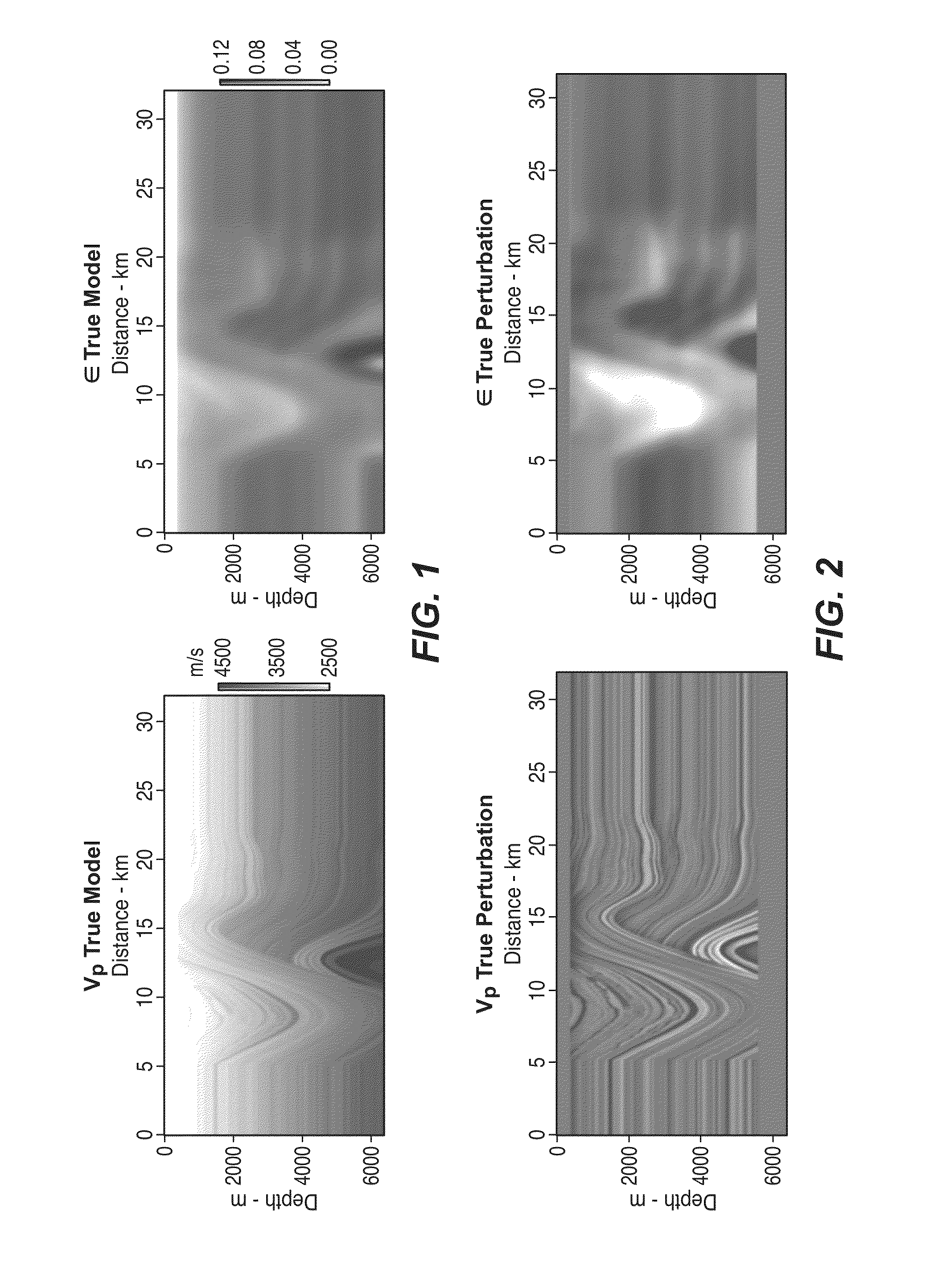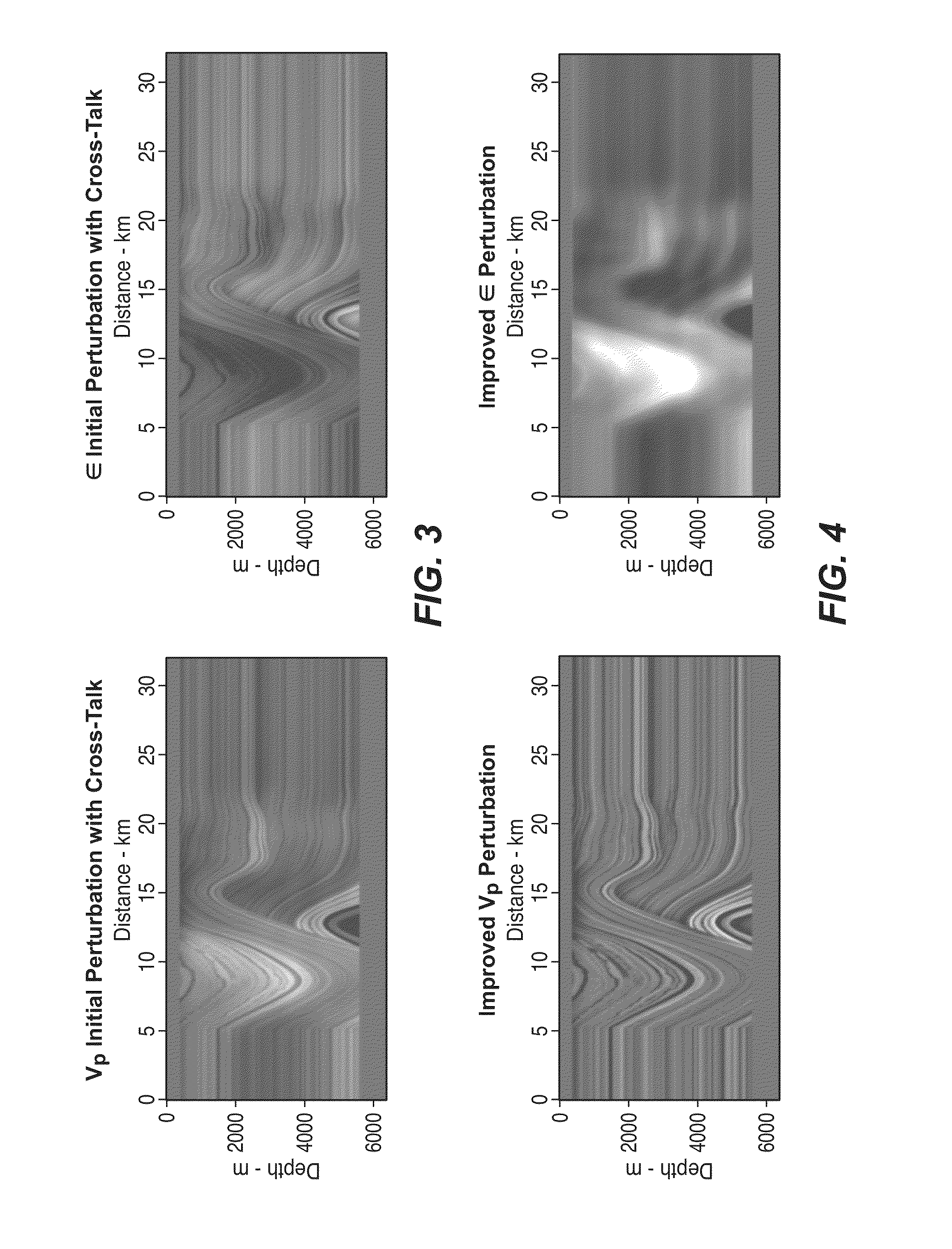Extended Subspace Method for Cross-Talk Mitigation in Multi-Parameter Inversion
a multi-parameter inversion and subspace technology, applied in the field of geophysical prospecting, can solve the problems of inability to eliminate leakage (cross-talk) between various medium parameters, inability to provide the correct scaling between different components, and inability to provide the best possible descent direction of gradients
- Summary
- Abstract
- Description
- Claims
- Application Information
AI Technical Summary
Benefits of technology
Problems solved by technology
Method used
Image
Examples
examples
[0047]The present inventive method was tested using synthetic data generated by assuming the “true” models for the parameters Vp and ε shown in FIG. 1, based on the SEAM model. (See “SEAM update: Completion of Phase I Acoustic Simulations,”The Leading Edge, June, 2010.) First, a model was chosen (not shown) with a very small perturbation in both for Vp and ε to ensure that the Gauss-Newton Hessian is a good measure of the curvature of the objective function. The slightly perturbed model represents a typical current model in the course of iterative inversion. The “true” search directions were then constructed, which were the difference between the true and the perturbed models (FIG. 2). As an illustration of the cross-talk that could be contaminating search directions in a realistic inversion, a linear combination of the “true” search directions was computed, thereby introducing low-frequency overprint into the search direction for Vp and high-frequency reflectivity overprint into th...
PUM
 Login to View More
Login to View More Abstract
Description
Claims
Application Information
 Login to View More
Login to View More - R&D
- Intellectual Property
- Life Sciences
- Materials
- Tech Scout
- Unparalleled Data Quality
- Higher Quality Content
- 60% Fewer Hallucinations
Browse by: Latest US Patents, China's latest patents, Technical Efficacy Thesaurus, Application Domain, Technology Topic, Popular Technical Reports.
© 2025 PatSnap. All rights reserved.Legal|Privacy policy|Modern Slavery Act Transparency Statement|Sitemap|About US| Contact US: help@patsnap.com



